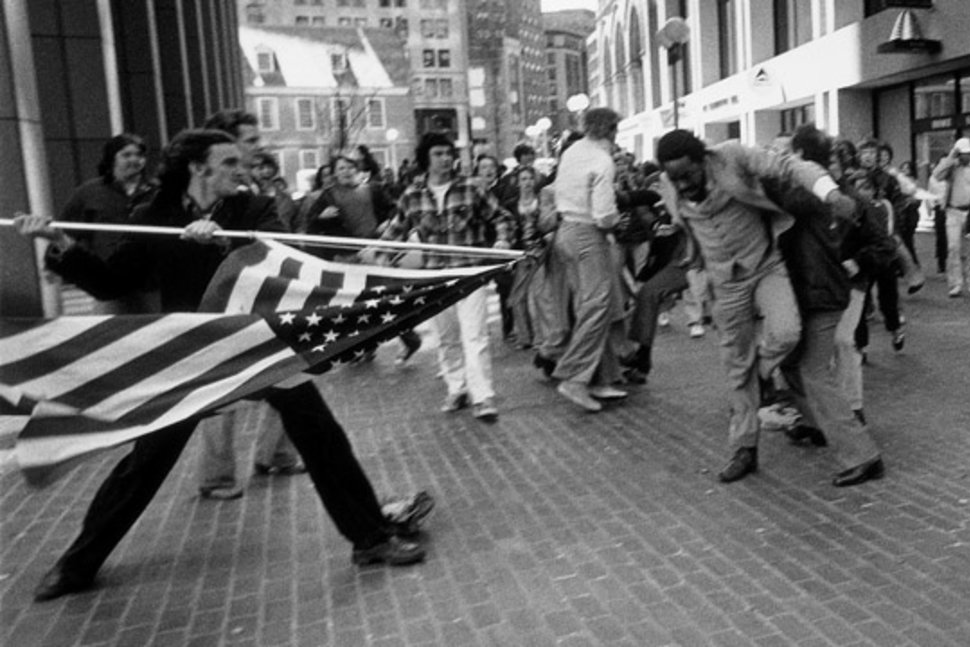And not only in Boston
“I have heard this with Boston hockey fans too, being pretty racist towards PK Subban when he played for the Canadiens,” my son Daniel wrote me reflecting on the racist slurs recently shouted at Baltimore Outfielder Adam Jones at Fenway Park. “Dad, is the city really this notoriously racist?”
His question took me back to 1975 when his mother and I, newly married, moved to Charlestown, a poor, white, working-class and largely Irish neighborhood of Boston, then in the throes of school desegregation and busing controversy inflaming the city. We lived a block below the high school and watched the yellow buses wind daily through Charlestown’s narrow streets, past the Bunker Hill monument to the high school behind it, past people screaming epithets at the students being transported in from Roxbury and Dorchester, Boston’s overwhelmingly black neighborhoods, while police sharp-shooters stood sentinel on the high school’s roof.
More than a century earlier, the ancestors of many in the crowd had themselves faced enormous discrimination at the hands of the city’s native elites, and they later had to defend their hard-won turf against newer immigrants who followed them to Boston. It had long been a city of tough ethnic neighborhoods, but there was a special ugliness in 1975, when local political leaders played on the anxieties of their insular constituents. Using barely coded language, they took control of the school board and city council and made their names – Louise Day Hicks. John Kerrigan. Pixie Palladino. Dapper O’Neil. – synonymous with bigotry.
“The Soiling of Old Glory”, City Hall Plaza, Boston, April 5, 1976; photo by Stanley Forman, Boston Herald American; book by Louis Masur.
So, yes, there is a history here, and it hasn’t always been a pretty one. It’s particularly vicious when demagogues use real grievances to legitimize violence and hate, and that’s not just in the past, and it doesn’t happen only in Boston.
